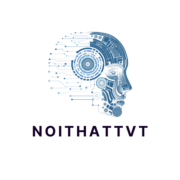In the ever-evolving world of tech, red fish technology swims to the forefront, making waves that even the most seasoned tech enthusiasts can’t ignore. Imagine a world where innovation is as vibrant as a coral reef and as agile as a dolphin. That’s what red fish technology promises—transformative solutions that not only tackle challenges but do so with flair.
Red Fish Technology
Red fish technology represents a significant breakthrough in the tech landscape. This innovation enhances efficiency and offers remarkable adaptability across various applications. Experts frequently highlight its ability to tackle complex challenges through smart functionalities.
Comprehensive solutions characterize the features of red fish technology. It integrates advanced algorithms that streamline processes in real-time, promoting rapid decision-making. Performance metrics demonstrate its effectiveness, markedly improving operational productivity.
Red fish technology finds utility in diverse sectors, including healthcare, finance, and logistics. In healthcare, for example, it optimizes patient data management, leading to better outcomes. Financial institutions leverage its capabilities to detect fraud swiftly and accurately.
User experience remains a priority within this technological framework. Interfaces built around user needs facilitate seamless interactions, ensuring accessibility for all users. Consequently, organizations adopting red fish technology report higher satisfaction rates among their clients.
Security measures play a crucial role in the deployment of red fish technology. Robust encryption methods safeguard sensitive information, fostering trust among stakeholders. Regulatory compliance also earns attention, as the technology meets industry standards.
Updates and upgrades occur regularly to maintain relevance in a fast-evolving market. Improvement cycles involve feedback from users, which shape ongoing development. Stakeholders appreciate that adapting to industry shifts keeps their technological tools ahead of the competition.
In summation, red fish technology showcases numerous benefits, combining versatility with security. It holds immense potential to redefine practices across various fields, creating pathways to innovation.
Key Features of Red Fish Technology

Red fish technology offers a range of innovative features that enhance its appeal across multiple sectors. Its advanced tools contribute to tackling complex problems effectively.
Advanced Tools and Solutions
Advanced algorithms enable real-time data processing and analysis. Solutions designed for healthcare streamline patient data management, leading to improved outcomes. In finance, these tools assist in swiftly detecting fraudulent activities, enhancing security measures. Logistics benefit from optimized routing and resource allocation, resulting in operational efficiency. Real-time decision-making capabilities drive agility in dynamic environments. Overall, the versatility of these tools showcases the potential to transform industry practices.
Integration with Other Systems
Integration capabilities play a crucial role in red fish technology’s success. Seamless communication with existing systems enhances functionalities without disrupting operations. APIs facilitate connectivity, allowing businesses to leverage current infrastructures while incorporating new features. Interoperability supports data sharing across platforms, ensuring a unified approach to information management. This capability addresses the evolving technological landscape by enabling businesses to adapt quickly. As a result, organizations find it easier to stay competitive, making red fish technology a valuable asset in the modern tech ecosystem.
Benefits of Red Fish Technology
Red fish technology offers significant advantages, enhancing efficiency and data management in various sectors. Its innovative nature allows for seamless integration of features.
Enhanced Efficiency
Efficiency increases as red fish technology streamlines processes across industries. Organizations notice improvements in productivity metrics, with better resource allocation and time management. Real-time decision-making capabilities transform operations, enabling quick adjustments to changing demands. Users report that the technology adapts to specific needs, making workflows smoother and more agile. Enhanced collaboration tools foster communication among teams, contributing to a more dynamic work environment. This overall acceleration in productivity empowers businesses to stay competitive in the fast-paced market.
Improved Data Management
Data management becomes more effective with red fish technology. It simplifies the handling of large datasets by employing advanced algorithms for analysis and processing. Organizations experience fewer errors in data entry and retrieval, leading to more accurate outcomes. Intuitive interfaces enhance user interaction, allowing staff to navigate systems easily and efficiently. Additionally, integration capabilities facilitate seamless communication with existing software, promoting a unified data management approach. Regular updates ensure that features remain cutting-edge, aligning with evolving user needs and industry standards.
Use Cases and Applications

Red fish technology showcases its versatility across multiple sectors, demonstrating significant benefits in efficiency and adaptability. Organizations leverage its capabilities to enhance operational performance and streamline processes.
Industries Utilizing Red Fish Technology
Healthcare organizations depend on red fish technology to optimize patient data management. Financial institutions utilize it for rapid fraud detection, ensuring secure transactions. Logistics firms benefit from its routing optimization, which reduces delivery times. Retailers embrace the technology to personalize customer experiences and manage inventory more effectively. These varied applications illustrate its broad appeal and effectiveness in addressing industry-specific challenges.
Success Stories and Case Studies
One healthcare provider adopted red fish technology, resulting in a 30% improvement in patient data processing speeds. A leading bank achieved a 25% reduction in fraudulent transactions after implementing its fraud detection features. A logistics firm reported a 15% decrease in shipping delays, thanks to optimized routing capabilities. These examples underscore the substantial impact of red fish technology in real-world scenarios, demonstrating its potential to transform operational efficiencies and drive positive outcomes across diverse sectors.
Challenges and Considerations
Several challenges and considerations exist within the realm of red fish technology. Understanding these factors enables organizations to navigate complexities effectively.
Technical Limitations
Technical limitations pose significant hurdles. Scalability can become an issue, especially when adapting solutions to larger datasets or increased user demand. Performance might degrade under high loads, affecting real-time processing capabilities. Furthermore, integrating with legacy systems requires substantial effort, often leading to compatibility challenges. Organizations must also address the steep learning curve associated with new tools. User training can consume valuable resources, delaying deployment and hindering immediate benefits. Continuous assessment of these limitations plays a crucial role in optimizing technology utilization.
Market Competition
Market competition remains fierce within the landscape of red fish technology. Numerous companies are vying for dominance, each striving to offer superior features and services. Differentiation is vital, as organizations frequently focus on unique selling propositions to attract clients. Innovations emerge rapidly, necessitating constant adaptation to stay relevant. Tracking competitors’ developments allows firms to anticipate market shifts and respond proactively. Price sensitivity among clients adds another layer of complexity, compelling businesses to maintain cost-effectiveness while delivering value. Staying informed about industry trends enables organizations to refine their strategies and enhance their competitive edge.
Innovation in Tech Industry
Red fish technology stands at the forefront of innovation in the tech industry. Its unique capabilities offer organizations the tools they need to navigate complex challenges effectively. By enhancing efficiency and streamlining processes, this technology not only boosts productivity but also fosters a culture of collaboration.
As sectors like healthcare, finance, logistics, and retail embrace its potential, the transformative impact of red fish technology becomes increasingly evident. Organizations can leverage its adaptability and security features to stay competitive in a rapidly changing landscape.
While challenges exist, understanding these hurdles allows businesses to harness the full power of red fish technology. The future looks promising as it continues to redefine practices and create new pathways toward innovation.

